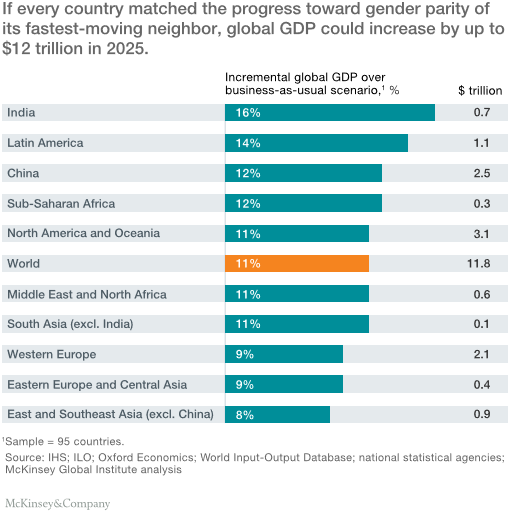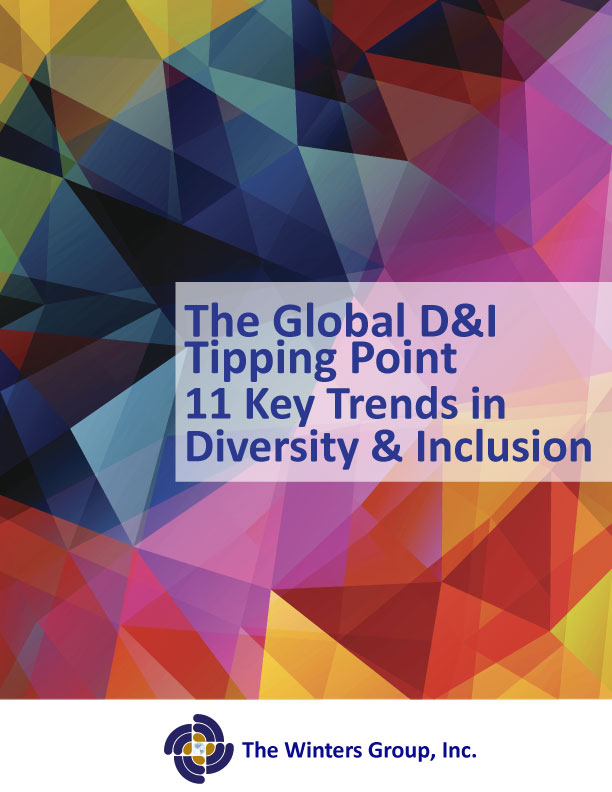
Women hold the majority in the global population, and they are the majority who are earning baccalaureate and advanced degrees. However, they are still woefully underrepresented in positions of power. We see this dynamic changing rapidly, not only because of the demographic reality, but also because of the global economic imperative to level the playing field.
For example, a study by McKinsey and Company found that if countries made progress toward gender parity the world economy could add trillions of dollars in growth during the next ten years. Likewise, many other studies have quantified the business case for gender equity, at both societal and organizational contexts. Nonetheless, even as strides are made, there is still much work to be done in addressing gender inequities across the globe. We explore this ever-relevant trend in our Global D&I Tipping Point report.

GDP: Improving Women’s Participation in the Workforce
Expanding upon this trend, we also discuss the data, and lack there-of, around the experiences of women of color in the workplace. We, along with other researchers, have found that the experiences of this group are often time overlooked and left at the margins of mainstream dialogue around gender equity, thus further perpetuating their underrepresentation.
In an earlier study, Catalyst compared the experiences of women of color in the workplace to that of a concrete ceiling, a slightly different take on the proverbial glass ceiling typically used to describe barriers experienced by women in the workplace.
“The metaphor of a ‘concrete ceiling’ stands in sharp contrast to that of the ‘glass ceiling.’ Not only is the ‘concrete ceiling’ reported to be more difficult to penetrate, women of color say they cannot see through it to glimpse the corner office.” (Catalyst)
This dynamic was recently uncovered in another study by the Center of Talent Innovation which found that Black women were 2.8 times as likely as White women to aspire to powerful, leadership positions within organizations. However, they’re more likely than White women to feel stalled and feel that their talents aren’t being recognized by their superiors. They are also less likely to have access to informal networks and sponsorship and mentorship opportunities that are critical to career success.
This and more challenges, successes, and best practices around addressing gender equity across the globe are included in our Global D&I Trends report.



















